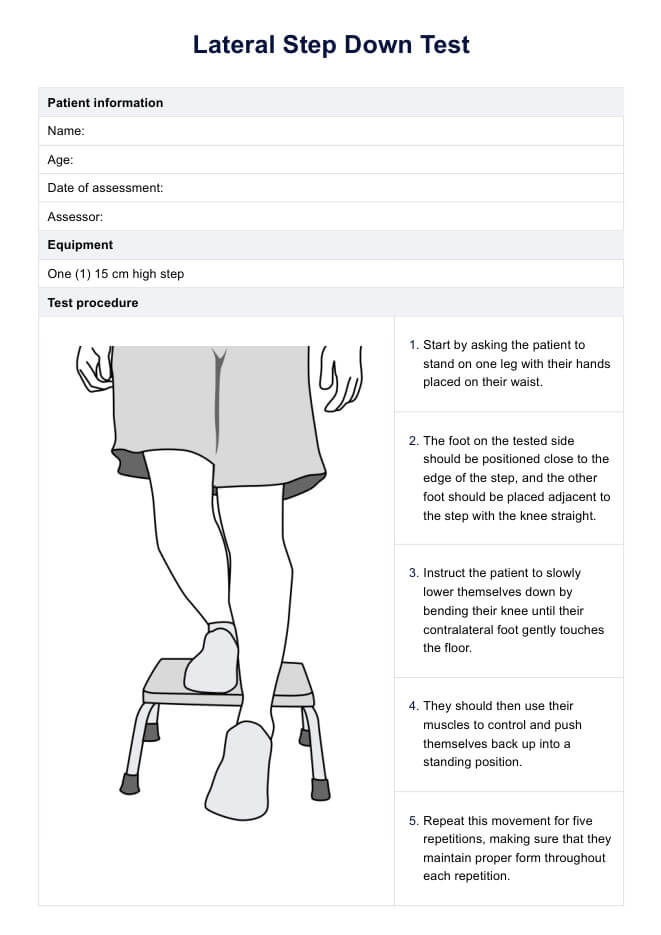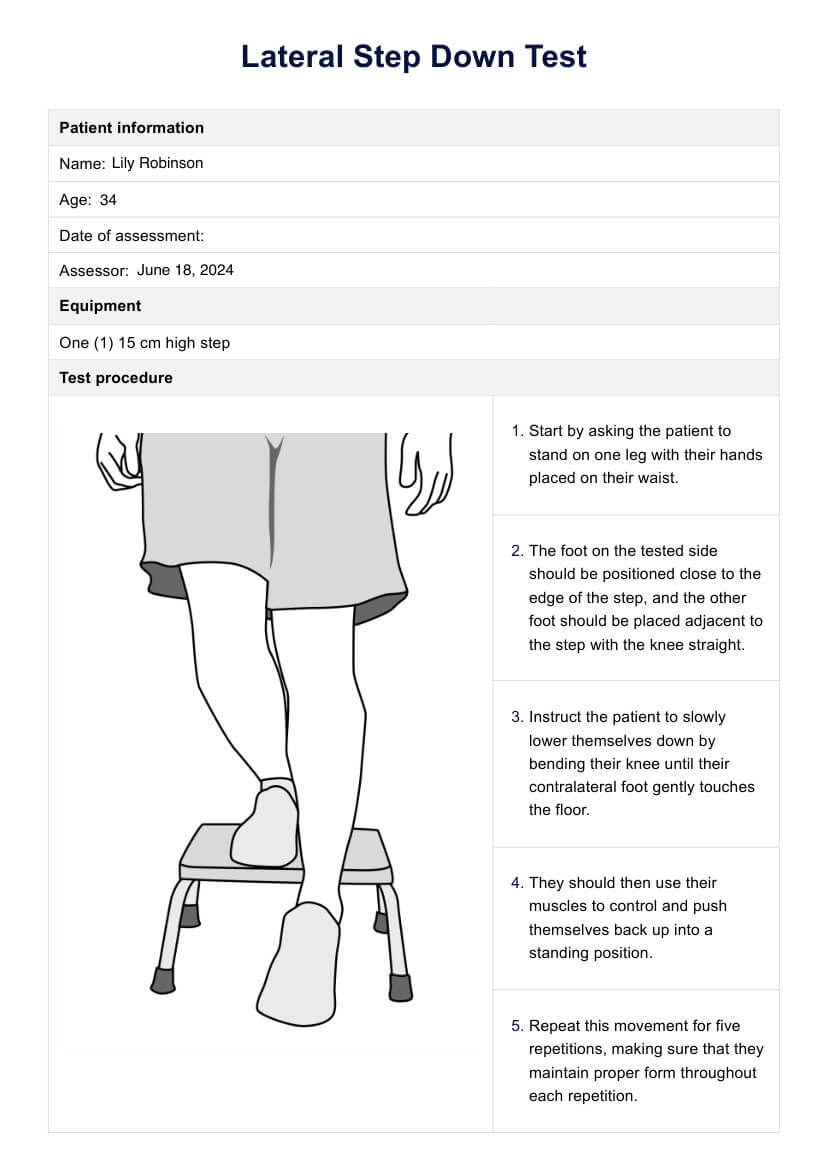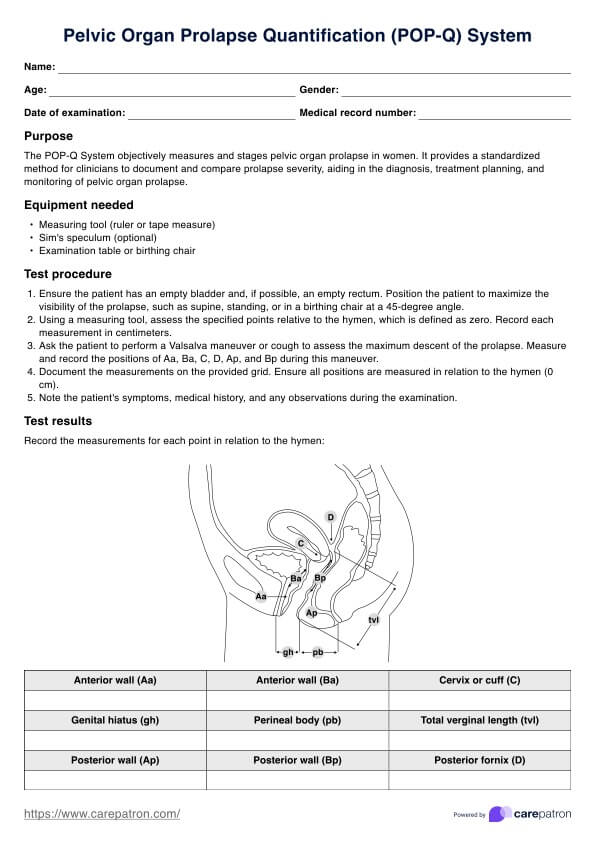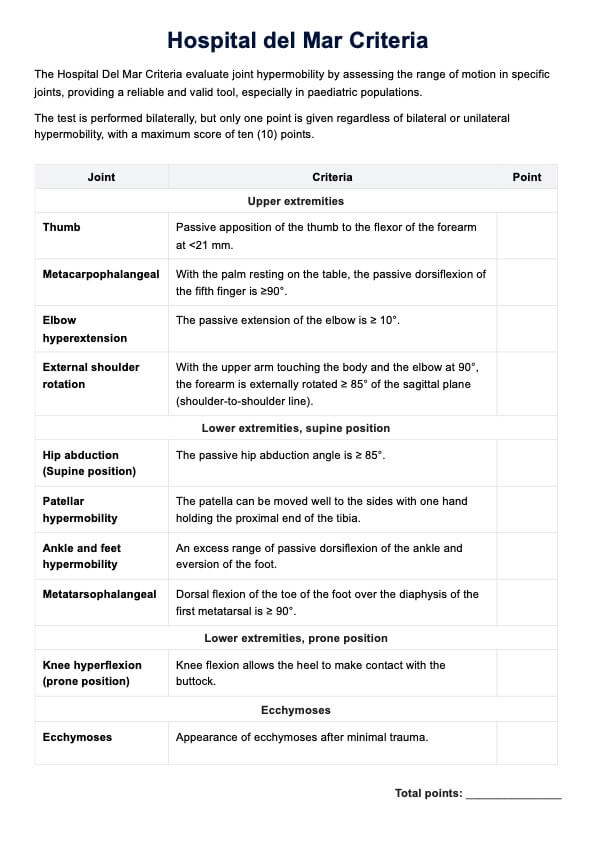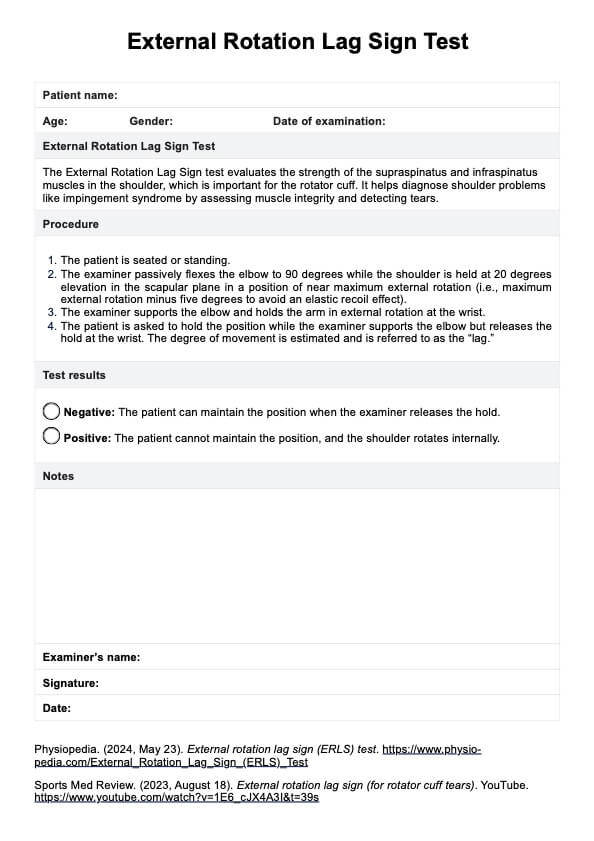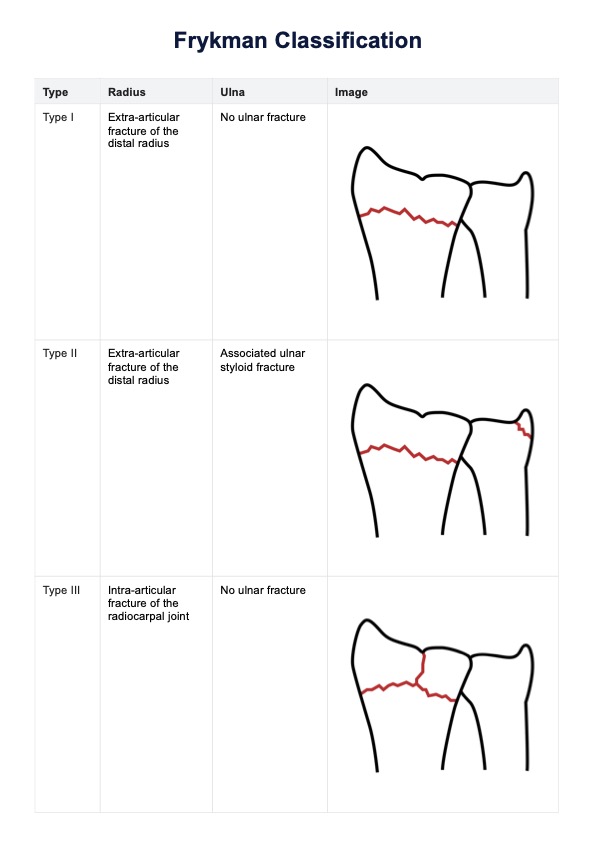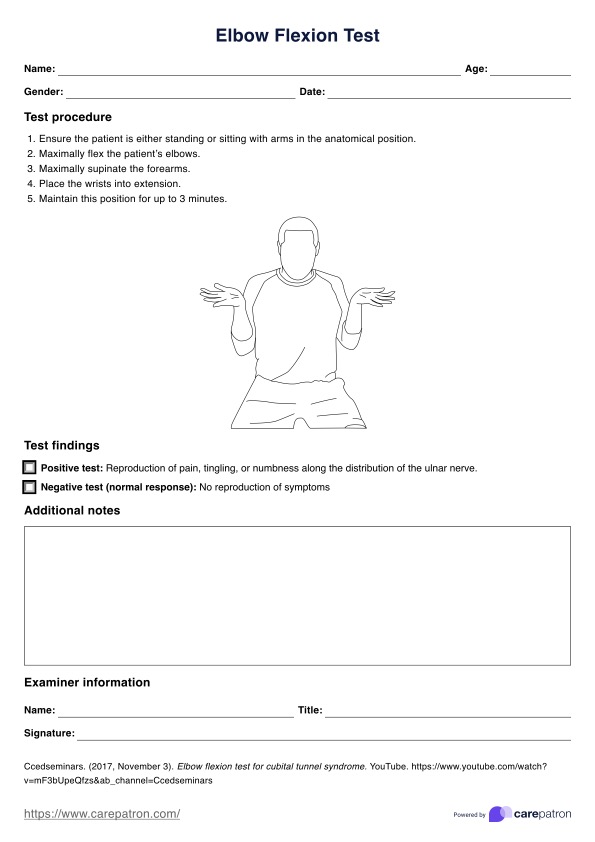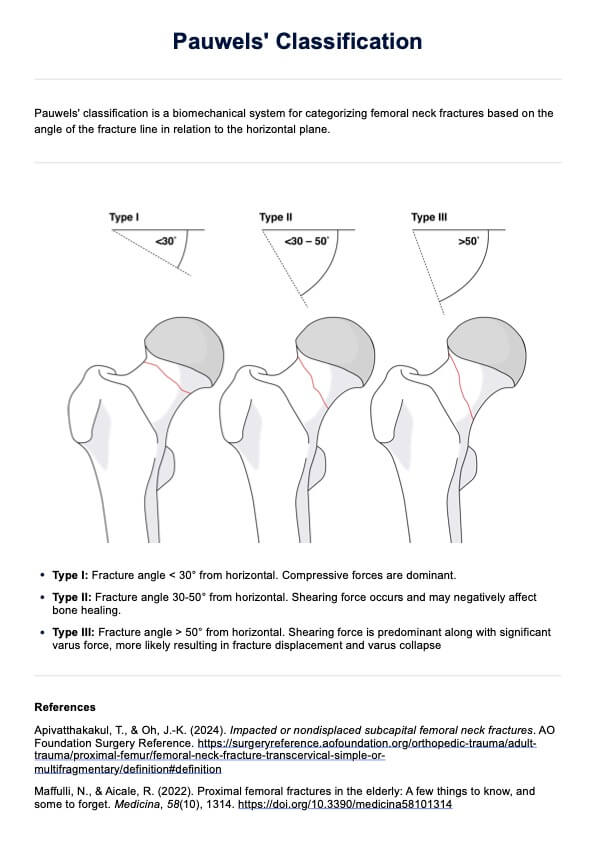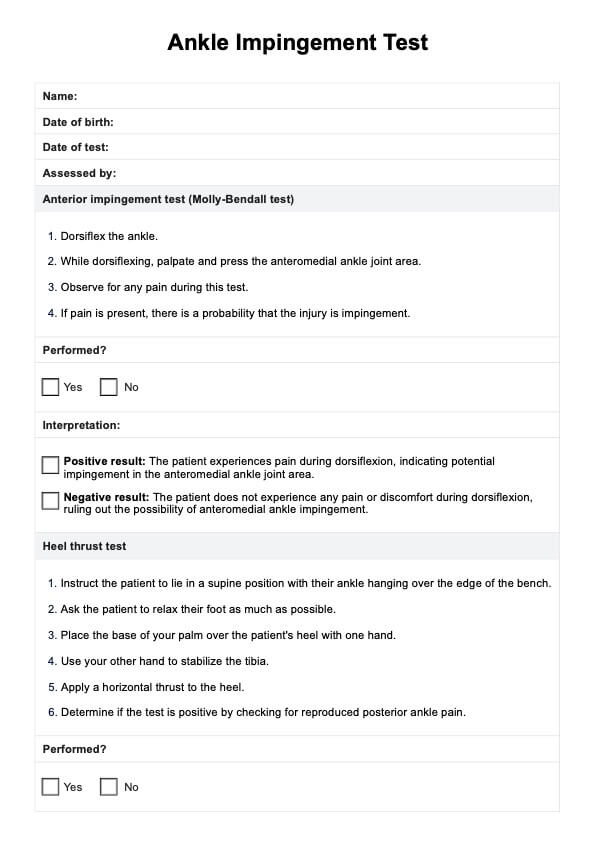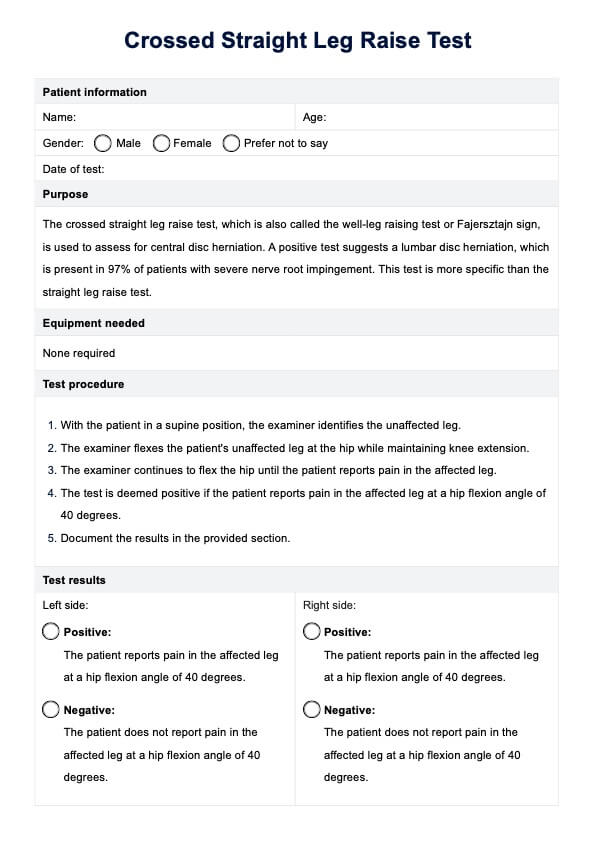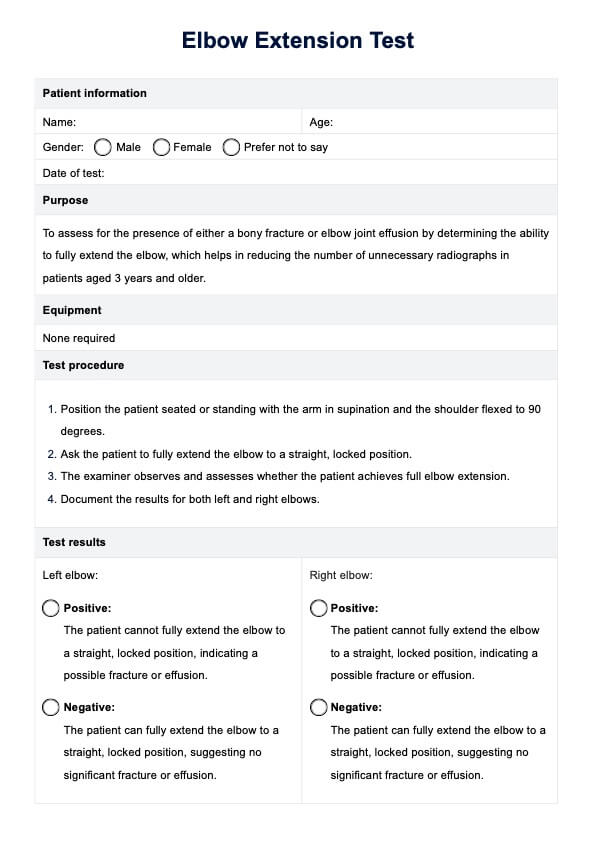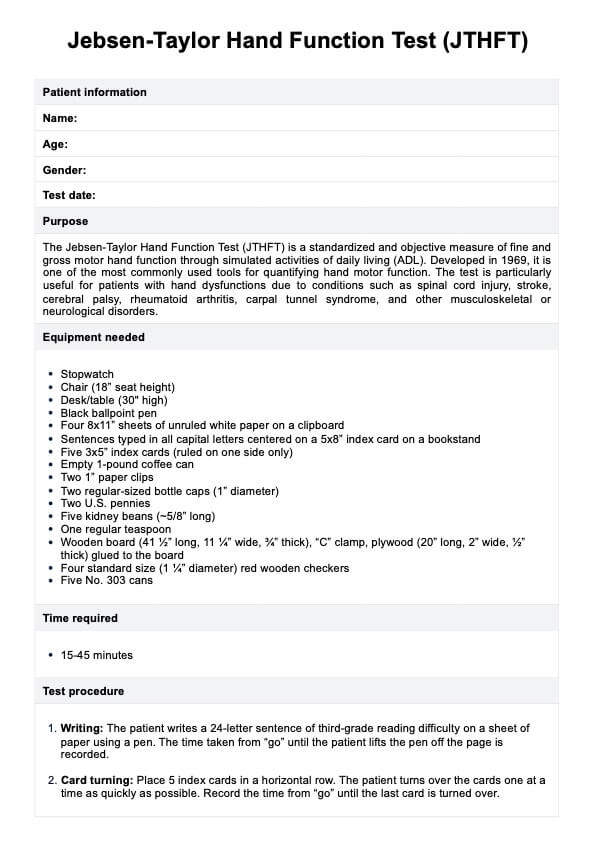Lateral Step Down Test
Learn about the Lateral Step Down Test, its benefits, and how to perform it with Carepatron's free PDF download. Improve your lower body strength and balance with this simple exercise.


What is a Lateral Step Down Test?
The Lateral Step Down Test is a functional movement assessment used in sports physical therapy and rehabilitation settings to evaluate lower extremity movement quality, particularly focusing on the knee position and the quality of movement. In this test, the individual stands on a step or platform with the contralateral leg hanging off the side. The starting position involves the individual standing tall with their knee straight on the involved leg and the contralateral leg freely hanging. The test involves a controlled descent of the unsupported leg towards the floor, with the goal of assessing the ability to control movement and maintain stability through the knee joint.
Key aspects evaluated during the Lateral Step Down Test include the alignment of the knee over the foot, the smoothness of movement, and the ability to maintain balance throughout the descent and ascent phases. Proper execution of the test helps clinicians identify potential weaknesses or imbalances in the lower extremity kinetic chain, which can inform targeted rehabilitation strategies. The Lateral Step Down Test is particularly useful in assessing functional asymmetries and rehabilitation progress in individuals recovering from lower extremity injuries or surgeries.
Lateral Step Down Test Template
Lateral Step Down Test Sample
Scoring the Lateral Step Down Test
To properly administer this test, it is important to have a clear understanding of the scoring criteria. This includes identifying key strategies used during the movement, such as arm strategy, trunk strategy, pelvic plane rotation/elevation, and knee position deviation. Additionally, observing any signs of instability or loss of balance can impact the final score (Manske & Davies, 2016).
Scoring criteria
The following are the specific scoring criteria for the Lateral Step Down Test:
- Arm strategy: If the individual uses their arms to recover balance during the step down, they earn a score of +1 point.
- Trunk strategy: Leaning or tilting the trunk to one side while performing the step down earns a score of +1 point.
- Pelvic plane: Any rotation or elevation of the pelvis during the movement also earns a score of +1 point.
- Knee position: Observing any deviation in knee position, specifically deviating medially and having the tibial tuberosity medial to the second toes or the medial border of the foot, earns a score of +1 or +2 points.
- Steady stance: If the individual steps down on the non-tested side or becomes unsteady at any point during the movement, they earn a score of +1 point.
Classification
After scoring the Lateral Step Down Test, each participant's total score is tallied and categorized into three distinct levels of movement quality:
- 0 or 1: Good quality of movement
- 2 or 3: Medium quality
- 4 or above: Poor quality of movement.
This classification system helps to identify areas of strength and weakness in an individual's lower extremity function. A good quality score indicates that an individual has proper control and stability while performing the single-leg squat, with minimal compensations.
Benefits of using our template
Carepatron's Lateral Step Down Test template offers numerous advantages for healthcare practitioners and individuals aiming to assess and improve lower extremity movement quality. Here are five key benefits:
Standardized assessment
Using our template ensures a consistent and standardized approach to conducting the lateral step down test. This uniformity enhances the reliability and comparability of results across different patients and settings, providing a solid foundation for accurate diagnosis and treatment planning.
Efficient documentation
The template simplifies the process of recording and analyzing test results. With clear fields for documenting key metrics such as knee position and movement quality, practitioners can efficiently track progress and make informed decisions about patient care without getting bogged down by paperwork.
Objective scoring
Carepatron’s template includes an objective scoring system that categorizes movement quality. This structured evaluation helps practitioners quickly identify areas needing improvement, facilitating targeted interventions and better patient outcomes.
Accurate guidance
Our template incorporates step-by-step instructions, making it easier for practitioners to perform the test correctly and consistently. This guidance ensures that even less experienced clinicians can accurately conduct and interpret the test, improving overall clinical practice.
Reference
Manske, R. C., & Davies, G. J. (2016). Examination of the patellofemoral joint. International Journal of Sports Physical Therapy, 11(6), 831–853. https://www.ncbi.nlm.nih.gov/pmc/articles/PMC5095938/
Commonly asked questions
The lateral step down test is a functional assessment used in sports physical therapy to evaluate lower extremity movement quality, focusing on knee alignment and control during a step down motion. It helps identify imbalances, weaknesses, and potential injury risks.
Lateral step downs strengthen the muscles around the knee, hip, and ankle, improving stability and balance. They also help in enhancing functional movement patterns and preventing injuries.
The purpose of lateral steps is to build strength and stability in the lower extremities, particularly targeting the hip abductors and knee stabilizers. They are used to improve lateral movement control and overall functional performance.
Lateral exercises are important because they enhance the strength, balance, and coordination needed for side-to-side movements, reducing the risk of injury. They contribute to better athletic performance and overall lower body function.


